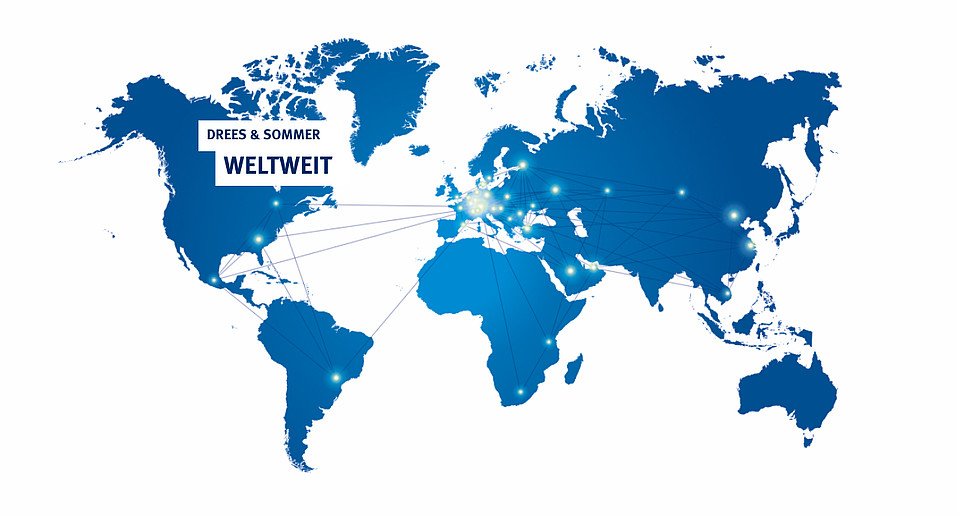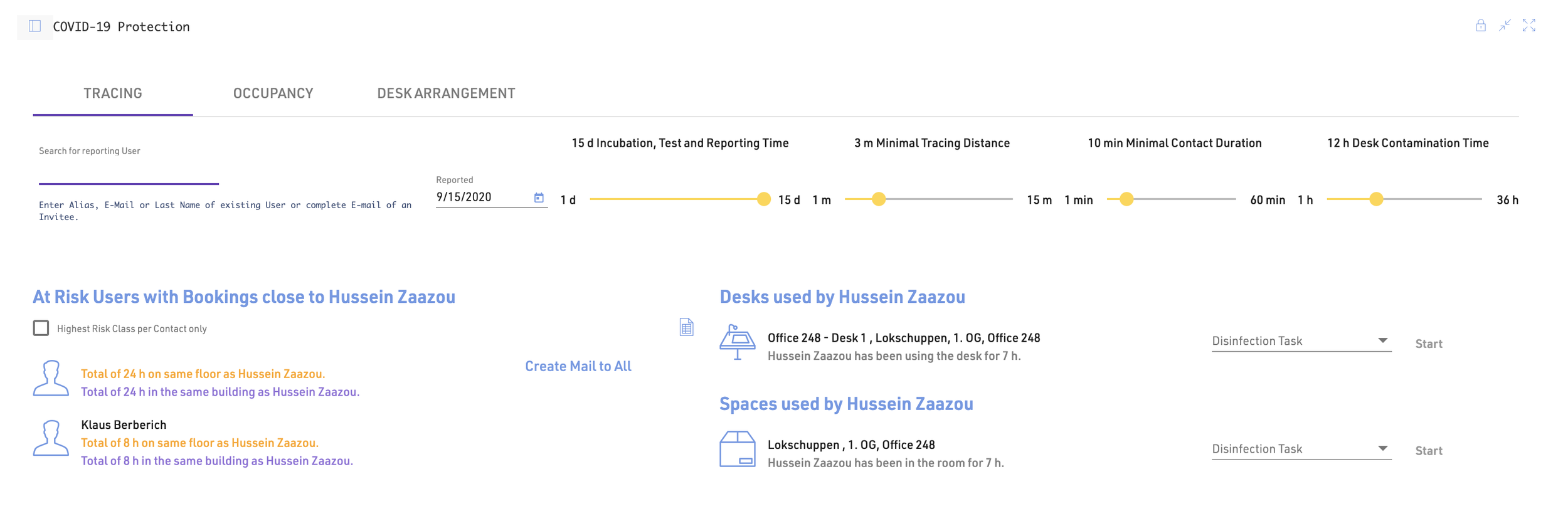30 locations, 3000+ employees in 3 weeks
The fast and sustainable implementation of the "2-metre office" at Drees & Sommer.
by Marie Dahmen
Especially against the backdrop of rising new infections, many companies are faced with the question of how the back-to-office issue can be implemented sustainably, safely and quickly for employees in the workplace. There are several aspects to consider here, which have already been discussed in our blog: Technology for the 2 meter office (6 Feet Office) have already been described. The consulting, planning and project management company, Drees & Sommer, has now implemented a solution with Thing-it for its more than 3500 employees at 46 locations worldwide by booking suitably distributed workstations.
The specification was: it must not take significantly longer than 3 weeks until all 3000+ employees at all 30 of 32 locations can book workstations.
This was only possible thanks to an intensive and interlocking working method between the core team at Drees & Sommer and ourselves.
As someone who has accompanied the (booking) app at Drees & Sommer from the very beginning and was also able to help shape its implementation at our various customers such as CA Immo/cube berlin and Fond of/The Ship, I have seen over the past two years how the app has significantly improved in terms of performance, usability, stability and user experience thanks to a lot of practical experience in the demo center and the test phase in our Aachen office, as well as feedback from the projects.
Many user wishes were incorporated, which were always discussed controversially - as is usual in software development - in order to achieve the best result.
The quick booking option for workspaces in particular is currently very popular due to the coronavirus pandemic. In my experience, booking via floor plans is also very popular with customers and internally.
The now flexible configuration options with booking of additional options (catering, equipment, etc.) and the option of automatic release in the event of no-shows should also be emphasized.
Markus Kluck, Head of the expert team for digitalization
Procedure
In the first step, Drees & Sommer had to provide the foundations. This required extensive research to locate and precisely define the floor plans of all the offices to be relocated. This served to optimize and detail the location of the workspaces and how they may be used and booked by employees.
Once all the documents had been compiled, the floor plans were digitized by our Professional Services team. Specifically, this meant creating a digital twin for each of the buildings in our portal using Building Information Management (BIM) so that the tables and their location could then be implemented virtually.
These workstations are marked with a unique ID that makes the exact location recognizable. Together with the digital implementation of the workspaces in the building model, booking calendars were also created via the import, if necessary with specific booking rules (duration, earliest possible booking time). These calendars are assigned keywords, such as "Quiet" or "Open Space", which make it easy to select the ideal working atmosphere via the app:
Evaluation tracing in case of infection
When a case of infection is reported, workplace booking makes it possible to determine which employees have been in the vicinity of the infected employee - at workplaces nearby, on the same floor or in the same building. Of course, only if the employees have not marked their bookings as 'private'.
If the booking has been confirmed, e.g. via barcode scan at the seat ('check in'), this information is similarly accurate as a real indoor location determination, e.g. via Bluetooth beacons or contact tracing as in the federal government's Corona Warn app.
Employees who are potentially at risk can be informed quickly by e-mail and contaminated areas can be disinfected quickly.
Balanced land use
In addition to making the workspaces bookable, the result also includes a precise overview of the location of the desks, including information on whether a desk is booked, making it possible to create utilization overviews. These utilization analyses can cover buildings, floors or just specific rooms and allow the percentage of use of the area to be displayed over a specific period.
The digitalization of an office building using the Thing-it platform helps to create a protected working environment. At the same time, a sustainable working environment of the future is realized.
Back-to-Office. Safe, smart, and productive.
Get in Touch
You have questions? Message or call us - or request your demo today.









